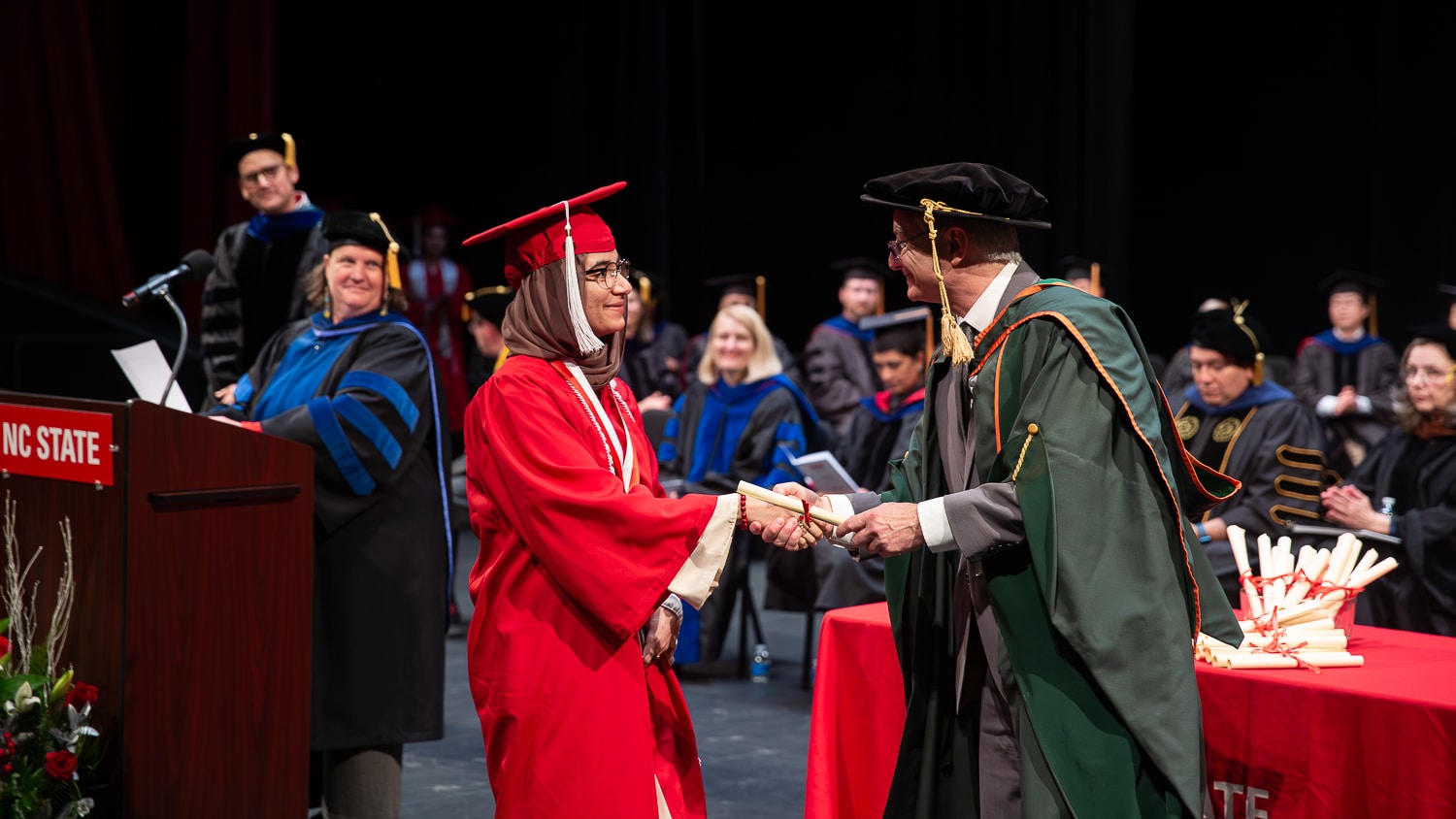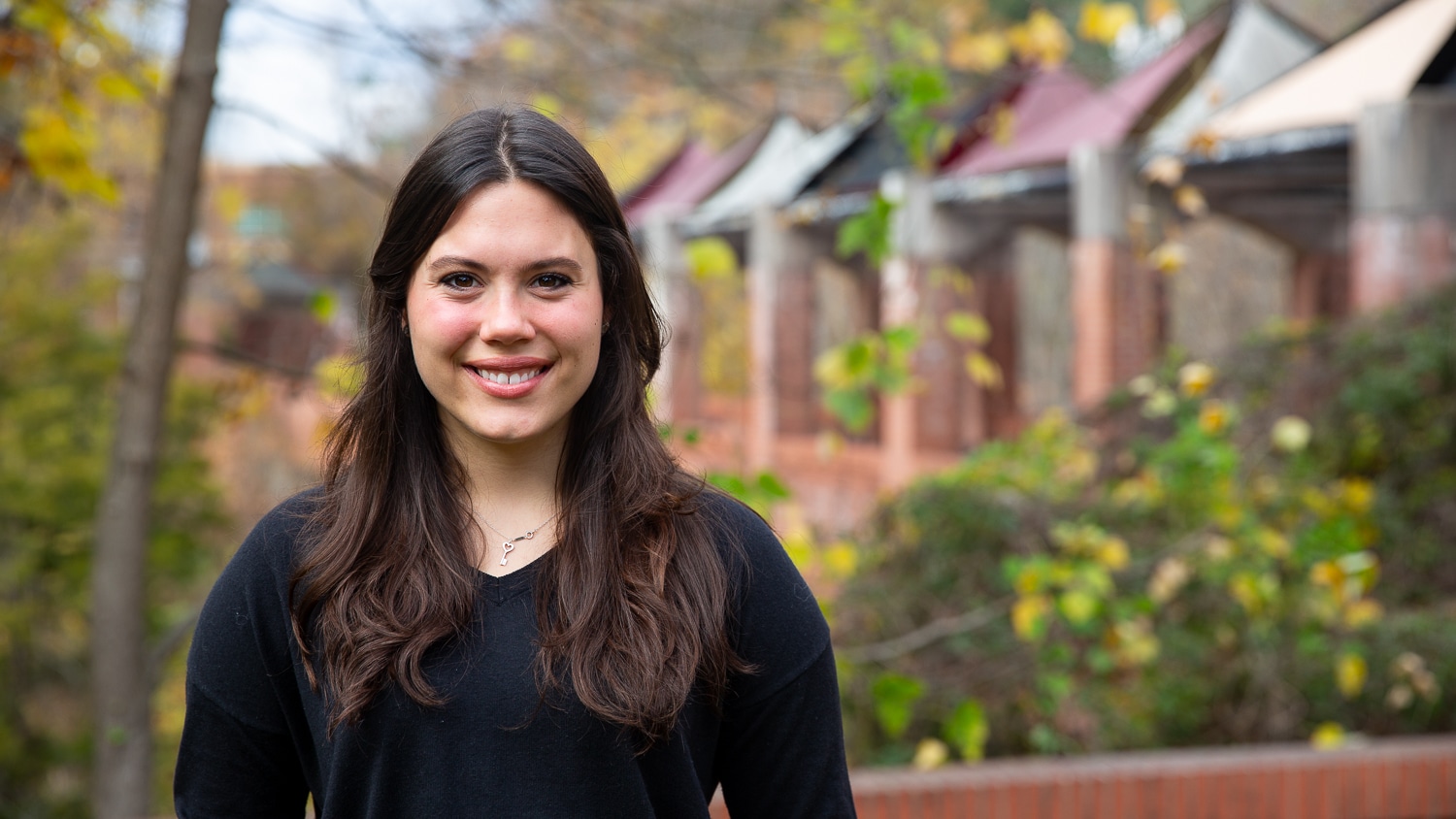Wilson College Students Design Adaptive Fashion for North Carolina Spinal Cord Injury Association

By Mary Giuffrida
Thanks to a collaborative effort between NC State students and faculty and Belk at Crabtree, confident smiles filled the room of the North Carolina Spinal Cord Injury Association (NCSCIA) women’s empowerment conference on Friday, May 6.
The conference, called “A Voice at the Table,” aimed to bring together women with disabilities for both a celebration of community and discussions of advocacy. The event included a fashion show featuring clothing and accessories created with the principle of universal design, a design process pioneered at NC State where products and spaces are designed to be accessible to people with a wide range of physical and intellectual abilities. Students from the Wilson College of Textiles created the clothing that appeared in the show.
The “Two Fridas Adaptive Fashion Show” was a collaboration between the NCSCIA and the Wilson College which drew on both the art of Frida Kahlo and Mary Grace Wilder and Sabrina Martin’s “Sonder” collection.
Finding Inspiration
“Sonder” was a semester-long project created for a fashion development and product management class. It debuted at the 2021 Threads Senior Collection Show along with 14 other original collections. “Sonder” aimed to show how beautiful clothing can be accessible to everyone, regardless of physical or cognitive ability.
“We created pieces that work for multiple populations of people without compromising style or comfort,” says Martin, who graduated in 2021 with a bachelor’s in fashion and textile management and is currently pursuing a Master of Textiles.
Martin and Wilder created looks for twelve models both with and without disabilities. They included features such as alternative closures, drawstring sleeves, accordion side paneling, natural fiber fabrics and whole knit garments. Each design was created to address the needs of the models, creating clothing that was not only beautiful but functional.
Throughout the design process Martin and Wilder drew on principles of universal design, and they were lucky enough to have the course taught by a leading expert in inclusive apparel design, Associate Professor Kate Annett-Hitchcock.
“When you talk about universal design, you’re being thoughtful about engaging the user before you even start brainstorming the initial design,” Annett-Hitchcock says. “It’s much earlier in the process that you start addressing the needs of the user.”
Forging New Connections
One of the models for the “Sonder” collection was a member of the NCSCIA who brought her positive experience back with her to the organization.
“She went back to the director,” Annett-Hitchcock says. “They then reached out to me and said, ‘We’re having this women’s empowerment conference in May and we’d like to do a fashion show.’”
Both Martin and Wilder created pieces for the show, some repurposed from the “Sonder” collection, others completely original.
“I worked with someone who was visually impaired and she brought up a lot of great things,” Martin says. “It made me aware of other issues and pushed my thoughts on how to create more inclusive fashion.”
Martin took the model’s feedback and created garments that were both reversible and able to be worn with either side facing forward.
Annett-Hitchcock reached out to the College of Design, where a class of graduate students created accessories to be included in the show.
“Almost every model who modeled in the spinal cord injury show had a garment that was original and an accessory from the students in the College of Design,” Annett-Hitchcock says.
The show didn’t stop at original designs; they also partnered with Belk to create a video offering the audience tips on shopping for adaptable fashion in retail stores.
“We reached out to Belk and they donated three looks,” Martin explains. “We went through the whole shopping process and took a video of the three women who wore the clothes and explained why this piece works and why this piece doesn’t.”
“The three models were all in wheelchairs, and they did a walkthrough of the store,” Annett-Hitchcock says. “They talked about accessibility in the aisles: what they can see, what they can’t see.”
The video and collaboration with Belk meant that some of the looks the audience saw could go straight from the runway to their closets. This is something that is not always true of adaptive fashion, as many pieces are only available from specialized companies or at higher price points.
The event itself was designed with the audience in mind. The models walked at eye level rather than on a traditional raised catwalk. Each designer also included a description of the look their model was wearing and its adaptive features.
“There were a lot of people that came up to us afterward and said, ‘This is incredible, what a great idea!’ and expressed how cool some of the concepts are.” Martin says.
Looking Forward
Wilder and Martin show no signs of slowing down. The duo has started their own company under the name “anyBODY” where they are continuing to use universal design to make beautiful clothing accessible to everyone.
“We’re a really good team,” says Wilder, who graduated in 2022 with a bachelor’s in fashion and textile management. “As we went through the process we just thought, ‘Wouldn’t it be a dream to do this in the future?’”
The startup was recently awarded a $10,000 microgrant from the NC Idea Foundation which supports promising young companies in North Carolina.
“The grant makes things feel a lot more real,” Wilder says. “And the programming we’ve been taking part in through that has been amazing.”
As part of the grant, Wilder and Martin received mentoring and guidance from the foundation, which is helping them move toward bringing anyBODY to the public.
“Everyone deserves to wear something that makes them feel confident and comfortable,” Martin says. “Ultimately that’s our goal.”
- Categories:


